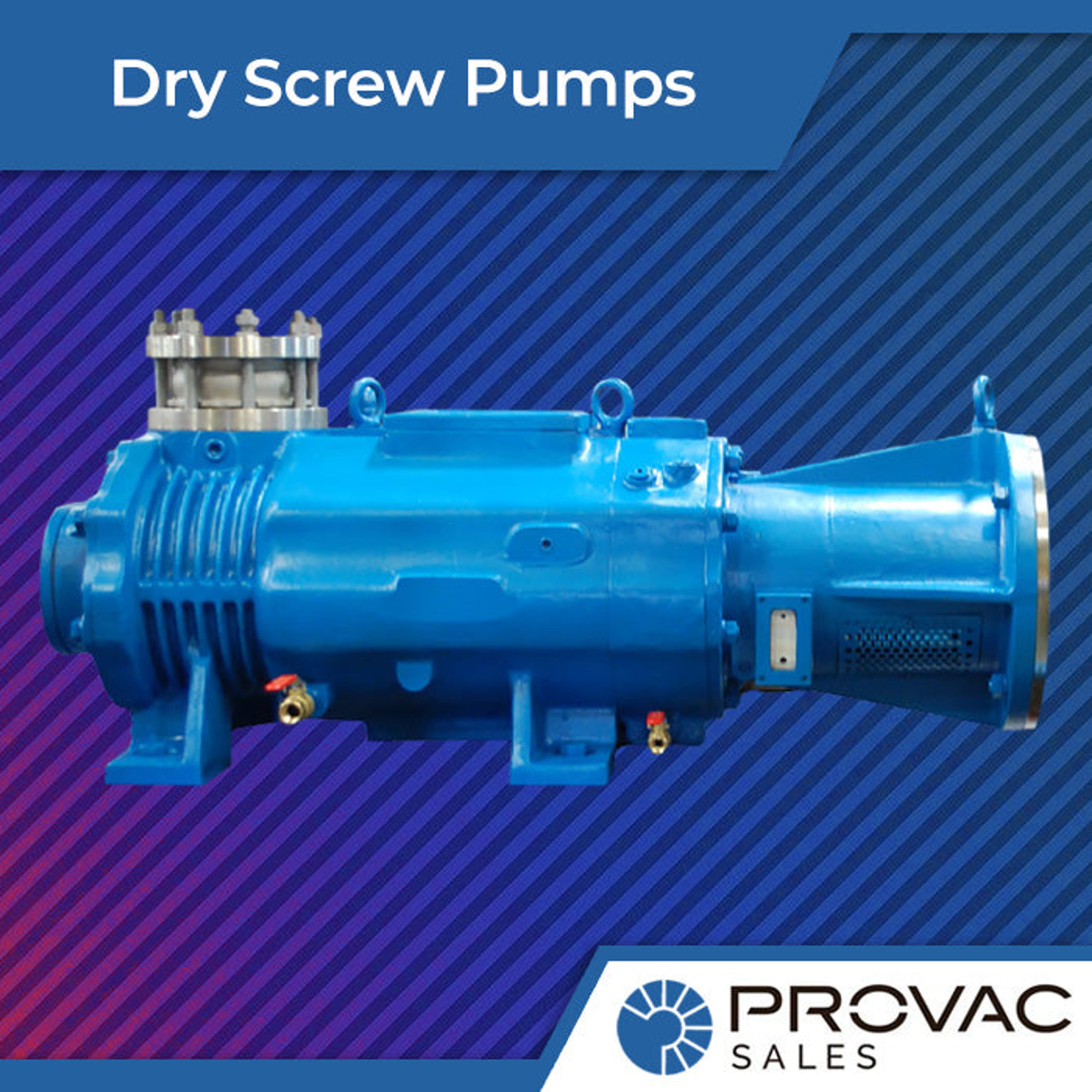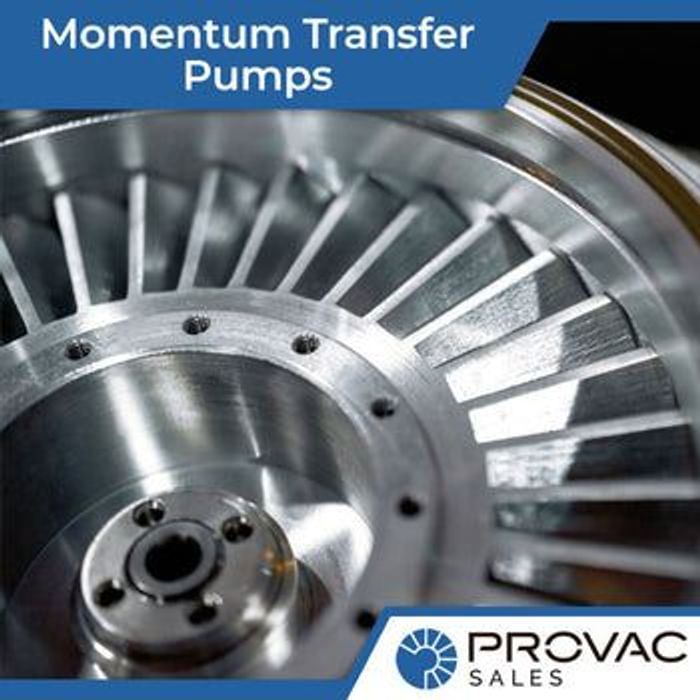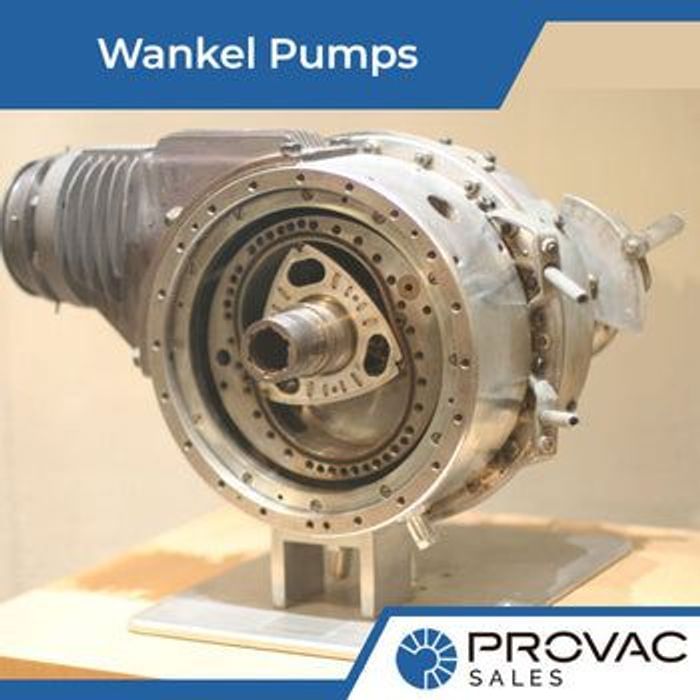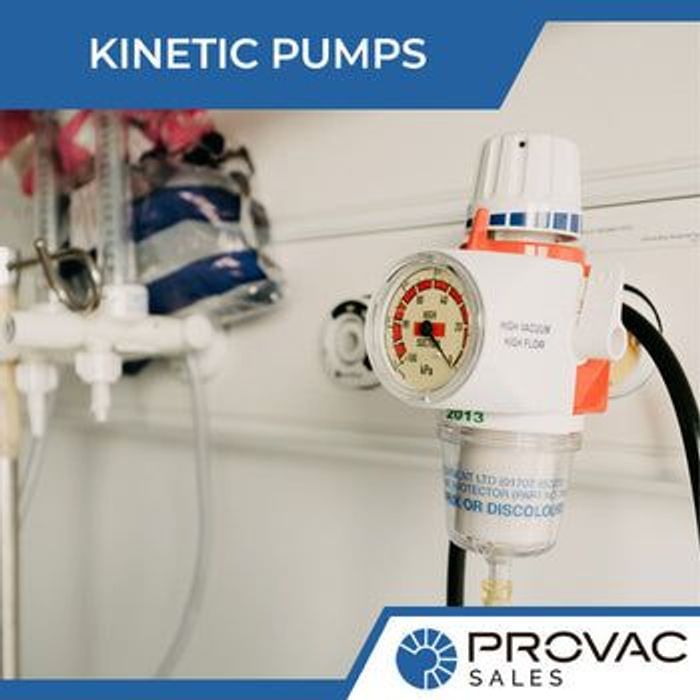Liquid ring and dry screw vacuum pumps are both pumps that use the principle of positive displacement but have some differences. A liquid ring pump uses fluids to create the needed vacuum, while a dry vacuum pump does not.
The vacuum in dry screw pumps is created through two parallel-arranged screw rotors that rotate in opposite directions. These rotors trap the gas coming in through the inlet and deliver it to the gas discharge or pressure side. As the gas is getting compressed, there is no contact between the rotors. This does away with any need for the compression chamber to have any operating fluids or lubrication, and this is the reason for the nomenclature "dry" technology.
There is, however, an internal gearbox in dry screw pumps that does need to be lubricated. This lubricant can find its way into the pumping chamber during operations over time, and in a way making false the claim of a "dry" technology.
Liquid ring pumps have cylindrical housing that is filled partially with a sealing liquid and a shaft that has a multi-blade impeller that is placed eccentrically inside the housing. The centrifugal force created by the rotating impeller creates a liquid ring.
It is this force that causes the liquid ring to be forced up against the walls on the inside of the pumping chamber.
Because of the eccentric location of the impeller in the pumping chamber, there is a constant increase and decrease of its blades depth of entry. This helps to create an increase in impeller cell volume on the side of the inlet port, thus forming a vacuum. What happens on the discharge side, is that the blades move further into the ring of liquid, causing an increase in pressure that causes the discharge through the discharge port.
The design inherent in the liquid ring pump permits the use of various liquids to act as a sealant, and this can be oil, solvents, water, or any other liquids that are compatible with the process. Liquids remain in contact with the vapors or gases that are needed to be compressed, and as a result, the compression of the gas is almost isothermal. Depending on the conditions, discharge temperatures can be between 45 and 150 degrees Fahrenheit and remain typically controlled in any process applications. As discharge temperatures are controlled in liquid ring pumps, gases of all kinds can be passed through or condensed, and this offers a great degree of flexibility.
Screw vacuum pumps can have a constant-pitch design, that allows transportation of gas at a constant volume of discharge where the major part of the compression occurs or can have progressive pitch design, in which the vapor or gas gets compressed while it is being transported to the discharge port. In both cases, the compression is adiabatic, and no heat leaves or enters the process, and discharge temperatures can be as high as 450 degrees Fahrenheit. These high temperatures in the use of this technology lead to concerns for safety.
Vacuum Pump Selection
Vacuum compression applications are used typically in processes like distillation, degassing, drying stripping, solvent recovery, evaporation, filtration, crystallization, waste gas compression, vapor recovery, reactor service, and gas boosters.
Many vapor/gas streams that need compression in process industries are toxic, explosive, reactive, corrosive, and wet or saturated. When you are evaluating the vacuum technology needed for a process, the first thing to do is to eliminate those pumping systems that are not able to meet the conditions for the process, which will include discharge pressure, gas inlet temperature, capacity, and vacuum level.
The next step required for evaluation is to review the operating characteristics that occur when a gas/vapor steam gets compressed.
The third step requires you to consider any process of gas/vapor contamination effects.
Liquid ring pumps are capable of taking on the dirtiest of processes. Their tolerance for harsh environments is high, as it also is for aggressively saturated air that can have or not have vapor loads. Vacuum pumps and compressors using liquid ring technology can also act as direct-contact condensers. When they are required to handle highly condensable vapor loads, the condensation occurs within the liquid ring and leads to an increase in pump efficiency, that leads to an increase in the speed of pumping over the curve of performance (cubic feet per minute/horsepower).
Vacuum pumps using the dry screw technology are more suitable to gas streams that are relatively dry and clean, and when there is zero tolerance to any process contamination.
These pumps achieve deeper partial vacuum levels and must be considered when you require vacuum levels below 10 torr, even though in these applications, multistage liquid ring systems can be used.
There is only one moving part in liquid ring pump designs, which is the impeller/shaft assembly. Bearings in these designs are outside the pumping chamber and in the rotating parts and the casing there is never any metal to metal contact.
These design characteristics make the maintenance and service of the liquid ring pump easy. In most industrial applications, oil-sealed liquid ring pumps can be used for 10,000 hours without any need to change the oil, and even this change of oil is simple and not expensive, thus negating any need for expensive contracts with technicians.
In the case of dry screw pumps, lubricants in the gear chambers need to be changed, and as the internal clearances are tight, it will require inlet filtration systems that require maintenance.





